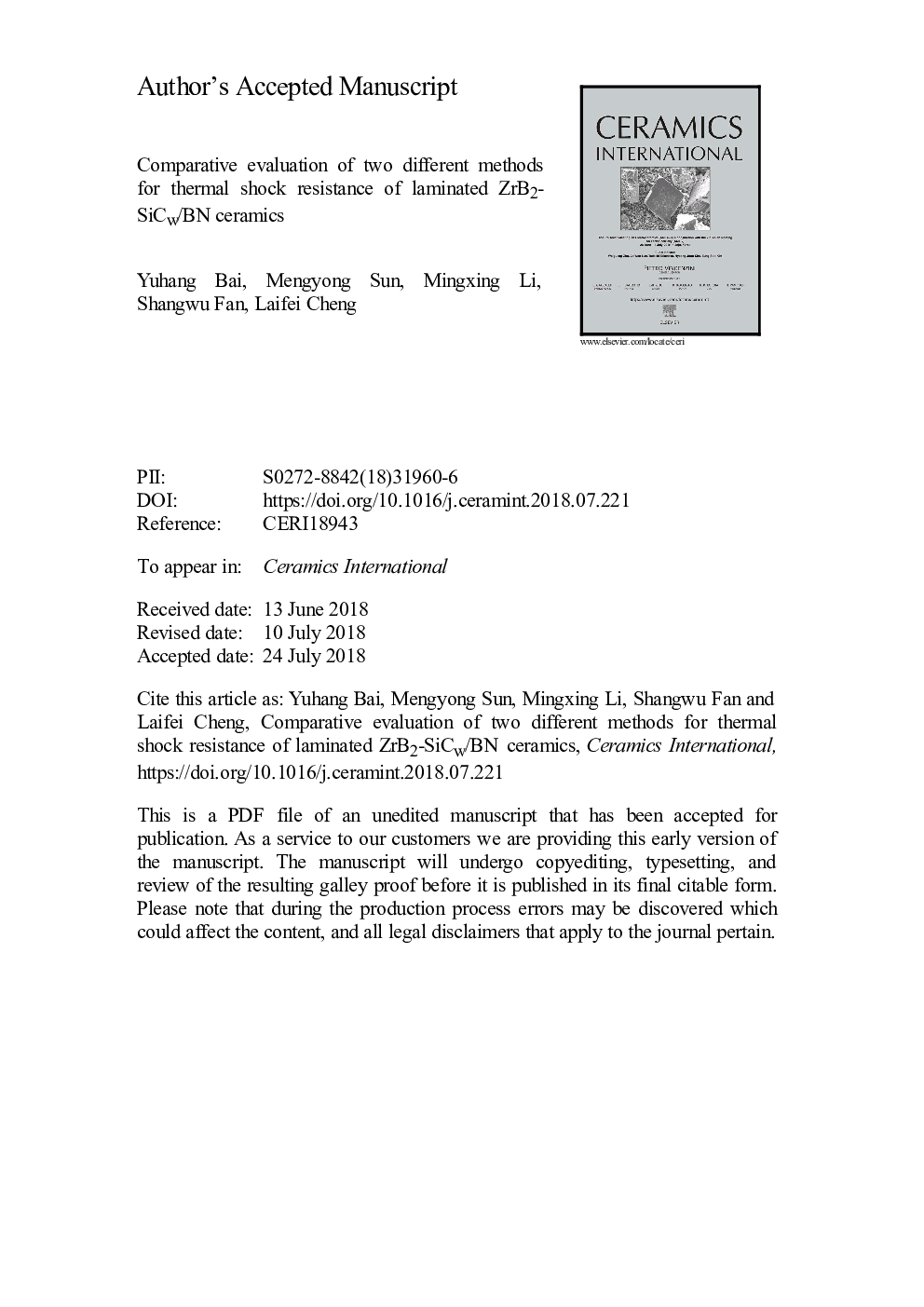| Article ID | Journal | Published Year | Pages | File Type |
|---|---|---|---|---|
| 10155441 | Ceramics International | 2018 | 39 Pages |
Abstract
The thermal shock resistance (TSR) of laminated ZrB2-SiCw/BN ceramic was evaluated through indentation-quench and quenching-strengthening methods. It was correspondingly compared to monolithic ZrB2-SiCw ceramic. In the indentation-quench method with consideration to crack propagation on the surface layer, the critical thermal shock temperature of laminated ZrB2-SiCw/BN ceramic with surface residual tensile stress was 550â¯Â°C, which was lower than monolithic ZrB2-SiCw ceramic (600â¯Â°C). Unlike the microscopic method of crack growth measurement through indentation-quench testing, the quenching-strengthening method, which was based on the macroscopic properties of the material, mainly characterizing the residual strength subsequently to thermal shock, the critical thermal shock temperatures of the laminates and monolithic were 609â¯Â°C and 452â¯Â°C, respectively. Compared to the brittle fracture of ZrB2-SiCw ceramics, the deflection, bifurcation and delamination of the cracks as the main TSR mechanisms of the laminated ceramics, were revealed through quenching-strengthening method, which was more suitable for the TSR characterization of laminated ceramics.
Related Topics
Physical Sciences and Engineering
Materials Science
Ceramics and Composites
Authors
Yuhang Bai, Mengyong Sun, Mingxing Li, Shangwu Fan, Laifei Cheng,
